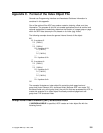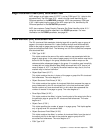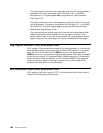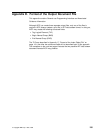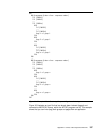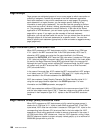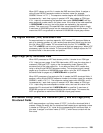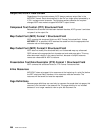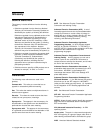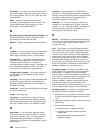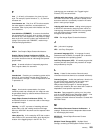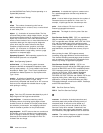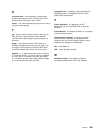
Page Groups
Page groups are architected groups of one or more pages to which some action or
meaning is assigned. Consider the example of the bank statement application.
Each bank statement in the print file comprises one or more pages. By grouping
each statement in a logical manner, you can assign specific indexing or tag
information to each group (statement). You can then use this grouping to perform
actions such as archival, retrieval, viewing, preprocessing, postprocessing, and so
on. The grouping also represents a natural hierarchy. In the case of the Viewer
application of AFP Workbench, you can locate a group of pages and then locate a
page within a group. If you again use the example of the bank statement
application, you can see how useful this can be. You can retrieve from the archival
(storage) system all of the bank statements for a specific branch. You can then
select a specific bank statement (group-level) to view and select a tagged summary
page (page-level).
Begin Document (BDT) Structured Field
When ACIF processes an AFP data stream print file, it checks for an FQN type
X'01' triplet in the BDT structured field. If the FQN triplet exists, ACIF uses it;
otherwise, ACIF creates one using the file name identified in the DDname
statement for OUTPUTDD. ACIF uses the FQN value when it creates an FQN type
X'83' triplet on the Begin Document Index (BDI) structured field in the index object
file and on the Begin Resource Group (BRG) structured field in the resource file.
Although the input file may contain multiple BDT structured fields, the ACIF output
will contain only one BDT structured field. (The same is true of End Document
(EDT) structured fields.)
In the case of line-mode files, ACIF creates the BDT structured field. ACIF assigns
a null token name (X'FFFF') and creates an FQN type X'01' triplet using the file
name identified in the DDname statement for OUTPUTDD.
ACIF also creates a Coded Graphic Character Set Global Identifier triplet X'01'
using the code page identifier specified in the CPGID parameter. For more
information on the CPGID parameter, see page 92 .
ACIF also creates two additional FQN triplets for the resource name (type X'0A')
and the index object name (type X'98'). These two values are the same as those
contained in their respective type X'01' triplets on the BDI and BRG structured
fields.
Begin Named Group (BNG) Structured Field
When ACIF processes an AFP data stream print file containing page groups, it
checks for an FQN type X'01' triplet on each BNG structured field. If the FQN
triplet exists, ACIF uses the value when it creates an FQN type X'0D' triplet on the
corresponding Index Element (IEL) structured field in the index object file. ACIF
appends an 8-byte rolling sequence number to ensure uniqueness in the name. If
no FQN triplet exists, ACIF creates one. Here too, ACIF appends a rolling, 8-byte
EBCDIC sequence number to ensure uniquely named groups, up to a maximum of
99 999 999 groups within a print file.
198 ACIF User’s Guide




